The Lunar Cycle
The lunar cycle is a 29.5-day period that the Moon goes through as it orbits the Earth. This cycle is responsible for the apparent changes in the Moon’s shape. Sometimes, it looks like a full circle, a half-moon (such as the first quarter moon), a crescent, or even totally invisible!
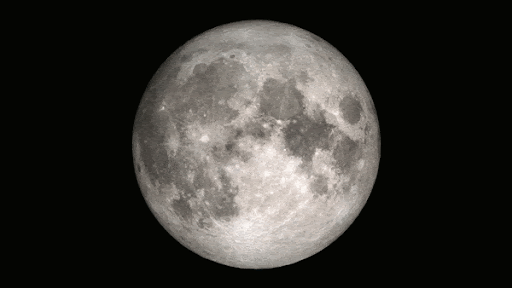
The Sun is the central and most massive object in the solar system. Everything moves around it, including the Earth. In the same way, the Moon orbits the Earth too.
The Moon shines and provides us with light at night. However, it is not the light’s source. This light is reflected from the Sun which, in turn, is reflected onto Earth in the form of moonlight.
Since everything moves, various parts of the Moon will be illuminated by the Sun, just like how we have nights and days on Earth. The Moon orbits the Earth in a counter-clockwise direction.
As the Moon continues on its path around Earth, we can sometimes see its nightside, and at other times, its dayside. In reality, it does not really change shape. It is just a matter of perspective and which side faces us on Earth.
If the night side is facing us, it is a New Moon. If it is the dayside, then we can witness a Full Moon. For the other phases in between, it is also just a matter of how much we can see of the illuminated side.
The Eight Phases of the Moon
The eight phases of the Moon are a result of its monthly dance around our planet.
The New Moon (0%), First Quarter (50%), Full Moon (100%), and Third Quarter (50%) are the primary phases of the Moon. There are intermediate phases between them that act as transition periods. These are Waxing Crescent, Waxing Gibbous, Waning Gibbous, and Waning Crescent.
To easily remember, “waxing” means the sunlit part is increasing. “Waning” means it is decreasing. In terms of the shape, “crescent” tells us that the illuminated part is still less than 50%. When it is more than 50%, it is a “gibbous” moon.
| Moon Phase | What It Means |
|---|---|
| 🌑New Moon | The Moon is invisible from our point of view because the unlit part is facing the Earth. |
| 🌒Waxing Crescent | We can see the first sliver of the Moon as the illuminated portion starts to grow bigger. |
| 🌓First Quarter | Half of the Moon is illuminated as it is already a quarter in its journey around Earth. |
| 🌔Waxing Gibbous | The illuminated part of the Moon is greater than its dark side. |
| 🌕Full Moon | We can see the Moon’s disk fully as the day sight faces Earth, while the Sun is on the opposite side. |
| 🌖Waning Gibbous | The night side of the Moon starts to creep as it continues on its journey around Earth. |
| 🌗Last Quarter | We can see the day and night sides of the Moon in equal parts. |
| 🌘Waning Crescent | The night side takes over the illuminated portion, which gives way to the New Moon phase and a new cycle begins. |
What is a First Quarter Moon?
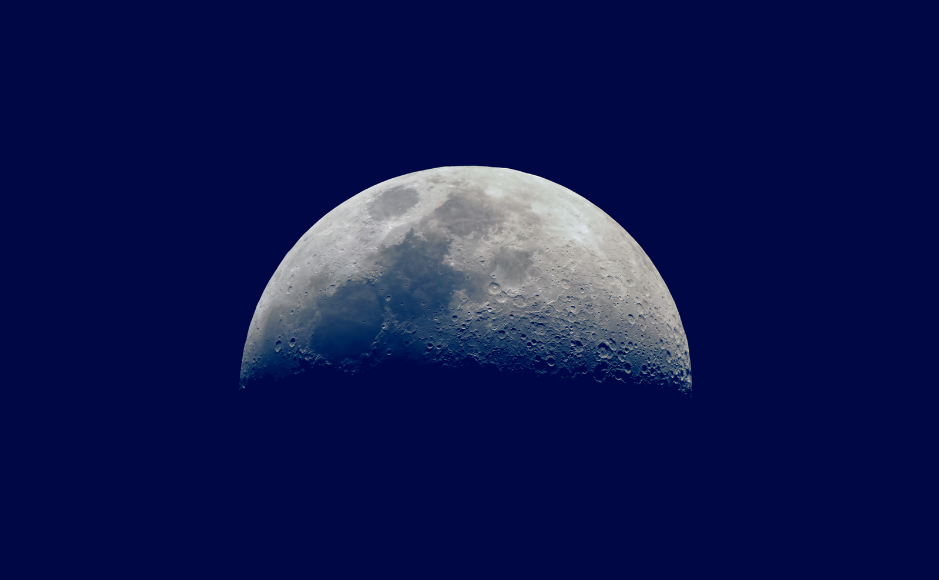
A First Quarter Moon is often called a Half Moon. We can see half of the illuminated side of the Moon at this time. In our perspective, 50% of it is visible and the other half is not.
As we know, the Moon’s cycle starts at New Moon when the Earth, Moon, and Sun are in a straight line. The Moon, which is in the middle, has its bright side facing the Sun. This is the darkest phase of the Moon because the bright side has its back to us.
As the Moon continues its way around Earth in a counter-clockwise direction, we get a glimpse of the dayside. This is called the Waxing Crescent Moon. It starts as a sickle-like shape and continues to grow bigger over the next few days.
The First Quarter phase follows the Waxing Crescent. The Moon has progressed in its journey and is already a quarter along its orbit. It forms a right angle (90°) with the Earth and Sun. It is the second major phase after the New Moon.
Following the First Quarter is the Waxing Gibbous Moon wherein more than 50% of the bright part is visible. It reaches its maximum at Full Moon where we can see 100% of the Moon’s disk. After this, the Moon will enter the waning phase, appearing less and less until it becomes a New Moon again.
When Does a First Quarter Moon Occur?
The First Quarter is the third phase of the lunar cycle. It is the second major phase of the Moon. The Waxing Crescent phase comes before it and it is followed by Waxing Gibbous. As a primary phase, we can easily identify a First Quarter Moon because it is half-lit. Another half-moon phase is the Third Quarter Moon.
But how are they different?
In the First Quarter, the Moon is at 90° or is a quarter of the way in its orbit around Earth. Meanwhile, in the Third Quarter, it has passed Full Moon (180°) and is already at 270°. It is already waxing and is just a quarter away from completing a cycle.
Though both are at 50% illumination, which side is bright depends on the observers’ location on Earth.
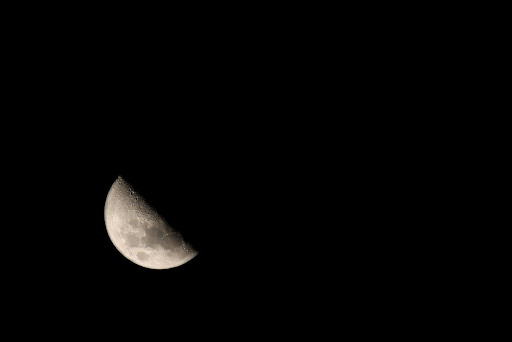
Which Side of the Moon is Lit Up?
Half of the Moon is visible during the First Quarter. However, which side of it is lit up?
The sunlit side of the Moon that you see will depend on your location as an observer. If you live in the northern hemisphere, you will see it on the right side. Now if you are in the southern hemisphere, it is the left half for you.
It becomes more interesting in areas around the equator. Observers in these places will see the upper part of the Moon lit up after moonrise. Just before moonset, it becomes the lower half.
The sunlit side appears opposite in the Third Quarter. This time, observers from the northern hemisphere will see the bright left side. The right half is seen from the southern hemisphere. From the equator, it will also be the opposite.
We can look at the table below for quick reference:
| Observers’ Location | First Quarter (and other waxing phases) | Third Quarter (and other waning phases) |
|---|---|---|
| Northern Hemisphere | Right half | Left half |
| Southern Hemisphere | Left half | Right Half |
| Equator | Upper half (after moonrise) Lower half (before moonset) | Lower half (after moonrise) Upper half (before moonset) |
Moonrise and Moonset During First Quarter Moon Phase
Just like the Sun, the Moon also rises and sets from east to west. The time when it will climb up the horizon will depend on the phase it is in.
In the first phase, at New Moon, the Moon and Sun are on the same side of the Earth. The Moon’s highest point will be at noon, just like the Sun. These two astronomical objects will rise and set at around the same time.
As the Moon is waxing, it will rise a bit later. When it reaches the First Quarter, the Moon will rise at around noontime and dip below the horizon at midnight. This is the opposite when it is in the Third Quarter because it will rise at midnight and set at noon.
Daytime Moon

When we think of the Moon, many of us picture it at night time. However, it is actually visible during the day most of the time. We just need to learn which phase it is in so that we can follow when it sets and rises. By doing so, we can also figure out the time of its highest point in the sky.
Another thing we have to consider is the Sun. If the Moon and Sun are close together in the sky, the Moon will get lost in the Sun’s glare. This is often the case around the New Moon. They move across our sky at about the same time so it is overpowered by the Sun.
It is also not visible in daylight around the Full Moon. Since the Moon and Sun are on opposite sides of the Earth, they rise and set at opposite times. Moonrise is at sunset and moonset is at around sunrise. In short, it can only be seen at night during this time.
What Is the Best Time To Spot the Daytime Moon?
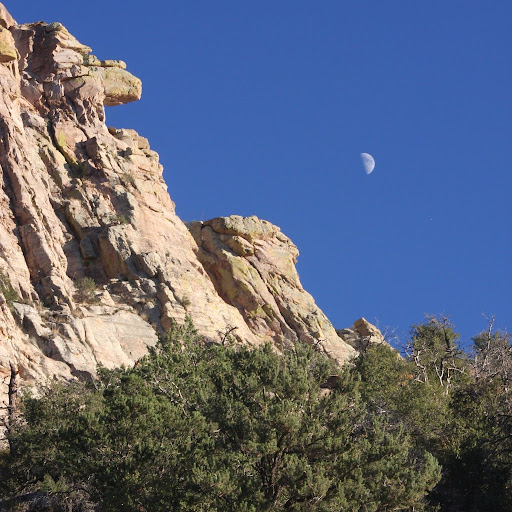
The best time to see the daytime Moon is when the three bodies are at a right angle, during First Quarter and Last Quarter. This way, the Sun and Moon are not together in the sky and are also not totally opposite.
During the First Quarter, the Moon rises around noon. That means the Sun has already risen. As the day progresses, the Moon will climb up the sky following the leading Sun. This gives us some time to spot the daytime Moon. Sunset is around 6 pm while moonset is around midnight.
The Sun and Moon will also race across the sky during the Last Quarter. But this time, the Moon is leading as it rises at midnight. By the time the Sun rises, the Moon is already high above the horizon. As the Sun climbs up the sky, the Moon will be setting around noontime.
Suitability for Astronomical Observations
The dark sky of the New Moon is the most ideal time for astronomical observation. However, we can also get a good view of the sky and other celestial objects around the First Quarter.
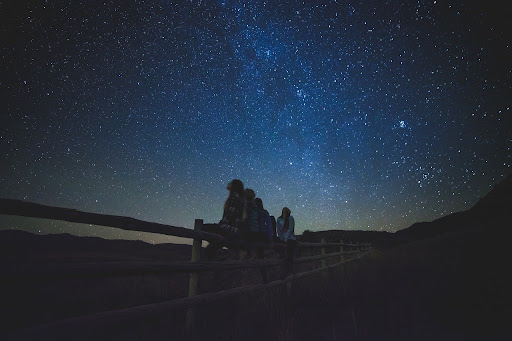
Moonset is around midnight during the First Quarter. That means it will be well high in the evening sky. It is not as dark as New Moon but it still serves as a good time for stargazing. Moonrise is at noontime so its highest point will be around sunset.
By evening, the Moon will likely be climbing down the sky already. That will be a great opportunity for stargazing. And while you’re at it, if still visible, the Moon is also a good subject for observations and photographs.
Also, many sky enthusiasts have pointed out that the best time to observe the sky is from the Third Quarter up until the First Quarter. That way, the Moon does not stay up all night, plus there is also the New Moon phase in between.
The Golden Handle
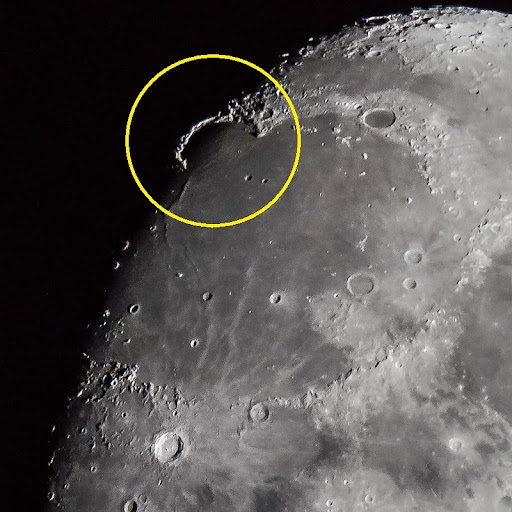
The Golden Handle is also known as the “Jewelled Scimitar.” It is a unique visual effect on the Moon that we can see roughly two days after the First Quarter. By this time, the Moon is already in the Waxing Gibbous phase.
The terminator is the dividing line between the dayside and nightside of the Moon. Straddling along this line is the Montes Jura. This is a mountain range on the Moon’s near side. As the Moon’s surface becomes illuminated, the peaks of Montes Jura light up while the lower part is still in darkness.
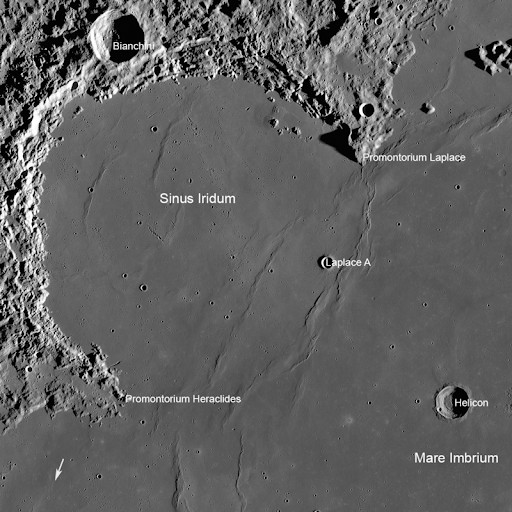
The bay which the mountain range surrounds is called Sinus Iridum. Also called Bay of Rainbows, Sinus Iridum is still not sunlit a few days after the First Quarter. Because of this, the bright peaks of Montes Jura look like a handle from our point of view.
Effect on the Tides
We get high tides and low tides every day but there are times when they are extremely high and low. Why is this so?
We know that the gravitational pull of the Moon causes the tides. However, it is not alone. The Sun is also a big factor in why we have tides. In fact, we have lunar tides and solar tides. Since the Sun is much farther from Earth, the Moon’s gravity is stronger. Because of that, the lunar tides are also stronger.
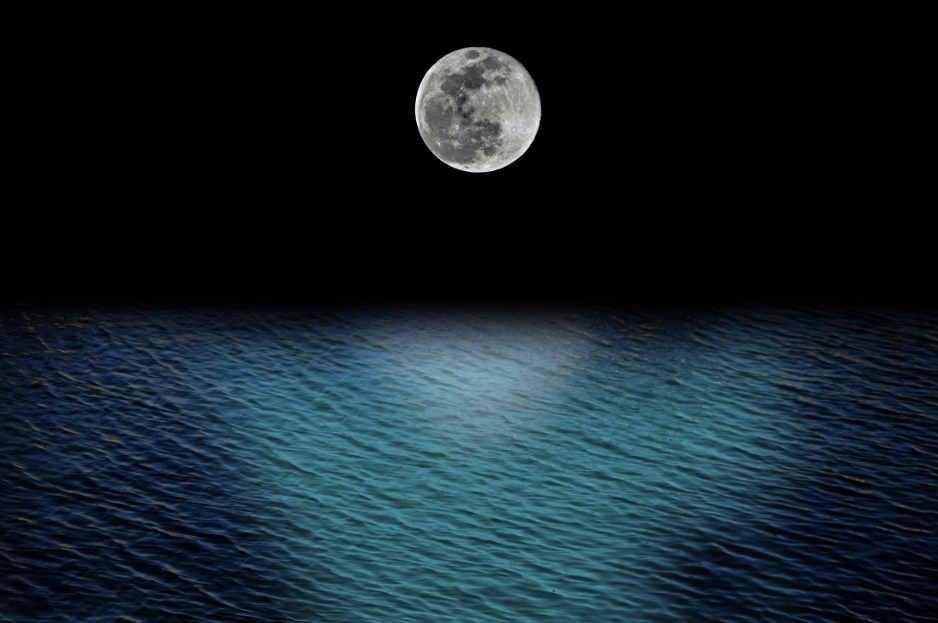
When the Sun, Earth, and Moon align during Full Moon and New Moon, the solar and lunar tides combine. This results in what we call “spring tides.” Spring here means “leap” as in a big jump because tides around these phases are either very high or very low.
Around the First Quarter and Third Quarter, the three bodies are not aligned. They form a right angle. The Sun pulls the solar tide on one side and the lunar tides are on the other. This cancels out the Moon’s and Sun’s pulls. As a result, we get what we call “neap tides.”
During the First and Third Quarters, high tides are lower and low tides are higher than normal. Still, the difference is not that extreme compared to spring tides.
Interesting Moon Facts
- The Moon’s orbital period around Earth takes 27.3 days. This is called a sidereal month. This is different from a synodic month. A synodic month is a period between one new moon to the next, which is 29.5 days. It is also called a lunar month.
- No eclipse happens during First Quarter because the Sun, Earth, and Moon are not aligned. A lunar eclipse occurs during a Full Moon while a solar eclipse happens when there is a New Moon.
- The Sun and the Moon are both responsible for the tides on Earth. The tides and the gravitational pull of the Moon are slowing the Earth’s rotation.
- We always see the same side of the Moon because it is tidally locked to Earth. That means, its rotational and orbital periods are just about equal.
- The side of the Moon that is always facing us is called the “near side” while the other one is called the “far side.”
- Technically, the far side is not a dark side because both sides of the Moon receive equal day and night.
Sources:
https://www.space.com/7267-moon-daylight.html
https://www.timeanddate.com/moon/phases/@z-us-10001?year=2022
https://solarsystem.nasa.gov/moons/earths-moon/lunar-phases-and-eclipses/
https://socratic.org/questions/what-causes-low-tides-and-high-tides-to-occur
First Quarter Moon – Image Sources:
Phases of the Moon (gif): https://spaceplace.nasa.gov/review/moon-phases/moon-phases.en.gif
Moon’s phases:
https://upload.wikimedia.org/wikipedia/commons/6/6a/Moon_Phase_Diagram_for_Simple_English_Wikipedia.GIF
First quarter moon:https://moon.nasa.gov/internal_resources/367
Half Moon: https://storage.needpix.com/rsynced_images/half-moon-226172_1280.jpg
Daytime Moon: https://storage.needpix.com/rsynced_images/half-moon-in-daylight.jpg
When to see the daytime moon: https://live.staticflickr.com/4111/5189618762_10c125c268_b.jpg
Stargazing: https://storage.needpix.com/rsynced_images/star-gazing-1149228_1280.jpg
Golden handle of the Moon: https://www.flickr.com/photos/22084572@N07/11351380653/
Sinus Iridum: https://upload.wikimedia.org/wikipedia/commons/thumb/7/7b/Wac_sinus_iridum300m.png/800px-Wac_sinus_iridum300m.png
Effects on tides: https://useruploads.socratic.org/8s5nYbffQP6bC3W7MhXq_spring_neap_orientation.JPG